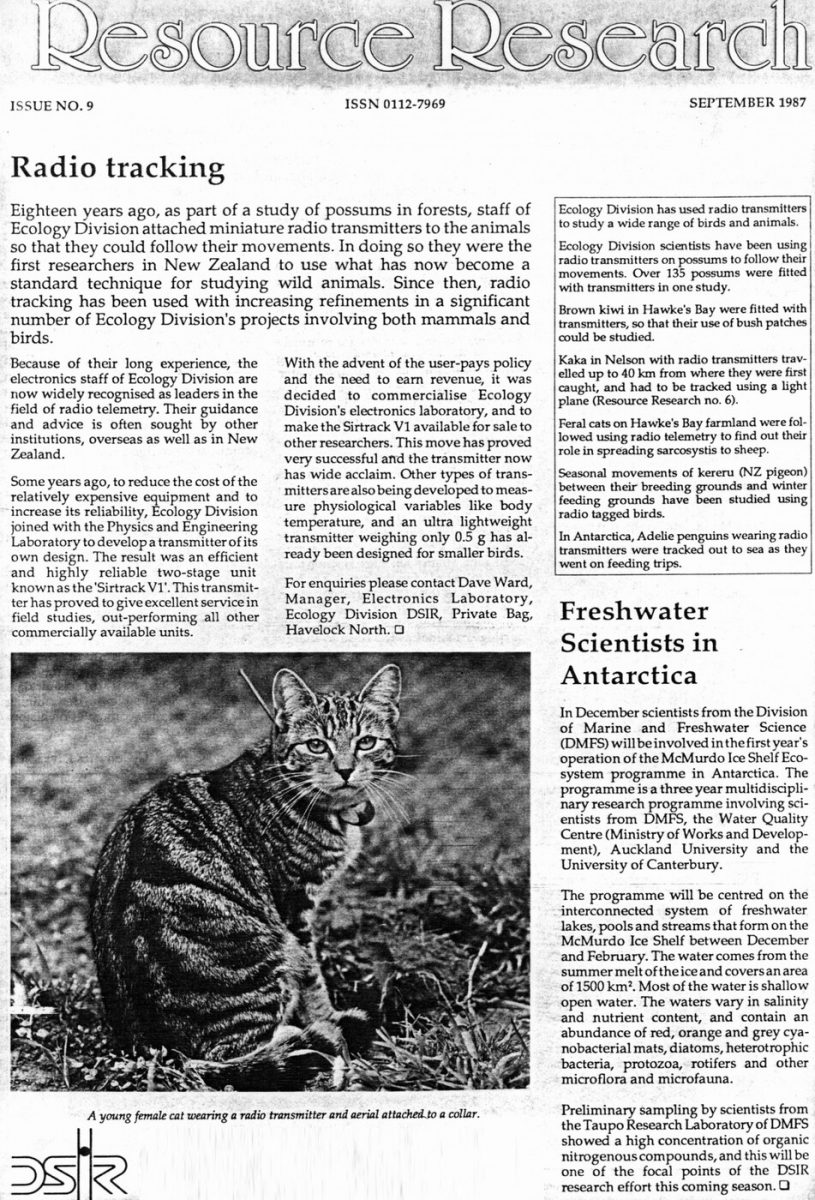Resource Research
ISSUE No. 9 ISSN 0112-7969 September 1987.
Radio tracking
Eighteen years ago, as part of a study of possums in forests, staff of Ecology Division attached miniature radio transmitters to the animals so that they could follow their movements. In doing so they were the first researchers in New Zealand to use what has now become a standard technique for studying wild animals. Since then, radio tracking has been used with increasing refinements in a significant number of Ecology Division’s projects involving both mammals and birds.
Because of their long experience, the electronics staff of Ecology Division are now widely recognised as leaders in the field of radio telemetry. Their guidance and advice is often sought by other institutions, overseas as well as in New Zealand.
Some years ago, to reduce the cost of the relatively expensive equipment and to increase its reliability, Ecology Division joined with the Physics and Engineering Laboratory to develop a transmitter of its own design. The result was an efficient and highly reliable two-stage unit known as the ‘Sirtrack Vl’. This transmitter has proved to give excellent service in field studies, out-performing all other commercially available units.
With the advent of the user-pays policy and the need to earn revenue, it was decided to commercialise Ecology Division’s electronics laboratory, and to make the Sirtrack V1 available for sale to other researchers. This move has proved very successful and the transmitter now has wide acclaim. Other types of transmitters are also being developed to measure physiological variables like body temperature, and an ultra lightweight transmitter weighing only 0.5 g has already been designed for smaller birds.
For enquiries please contact Dave Ward, Manager, Electronics Laboratory, Ecology Division DSIR, Private Bag, Havelock North.
Ecology Division has used radio transmitters to study a wide range of birds and animals.
Ecology Division scientists have been using radio transmitters on possums to follow their movements. Over 135 possums were fitted with transmitters in one study.
Brown kiwi in Hawke’s Bay were fitted with transmitters, so that their use of bush patches could be studied.
Kaka in Nelson with radio transmitters travelled up to 40 km from where they were first caught, and had to be tracked using a light plane (Resource Research no. 6).
Feral cats on Hawke’s Bay farmland were followed using radio telemetry to find out their role in spreading sarcosystis to sheep.
Seasonal movements of kereru (NZ pigeon) between their breeding grounds and winter feeding grounds have been studied using radio tagged birds.
In Antarctica, Adelie penguins wearing radio transmitters were tracked out to sea as they went on feeding trips.
Photo caption – A young female cat wearing a radio transmitter and aerial attached to a collar.
DSIR












Do you know something about this record?
Please note we cannot verify the accuracy of any information posted by the community.